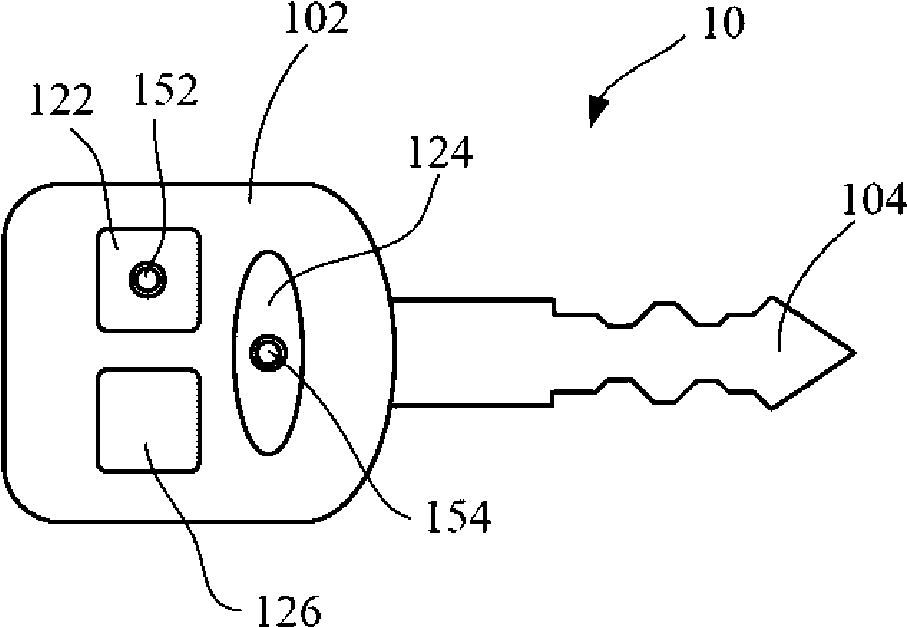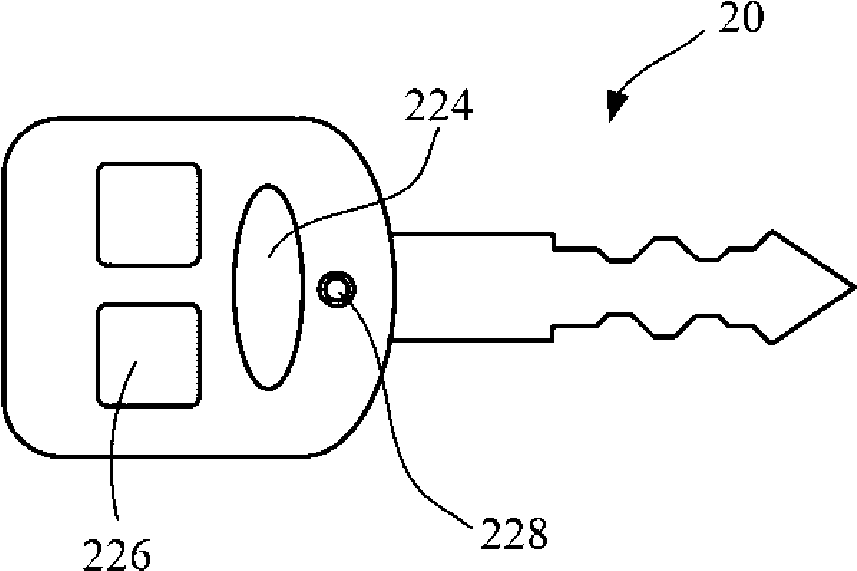Remote control key
A technology of remote control keys and instructions, applied in the direction of keys, signal transmission systems, instruments, etc.
- Summary
- Abstract
- Description
- Claims
- Application Information
AI Technical Summary
Problems solved by technology
Method used
Image
Examples
Embodiment Construction
[0022] see figure 1 , which is a schematic diagram of the appearance structure of the remote control key 10 in the first preferred embodiment. The fob 10 includes a controller 102 and a rack 104 connected thereto. The controller 102 is used to send wireless control signals to remotely control the switch of the controlled lock, such as the switch of the door lock. The rack 104 is used for inserting into the corresponding lock hole to perform mechanical switch lock. In other embodiments, the rack 104 may not be present. The controller 102 includes a lock button 122 , an unlock button 124 , a detection button 126 , and two indicator lights 152 , 154 . Two indicator lights 152 and 154 are respectively arranged on the lock button 122 and the unlock button 124 .
[0023] Please also see figure 2 , which is figure 1 The shown functional block diagram of the controller 102 in the remote control key 10 includes a lock button 122 , an unlock button 124 , a detection button 126 , ...
PUM
 Login to View More
Login to View More Abstract
Description
Claims
Application Information
 Login to View More
Login to View More - R&D
- Intellectual Property
- Life Sciences
- Materials
- Tech Scout
- Unparalleled Data Quality
- Higher Quality Content
- 60% Fewer Hallucinations
Browse by: Latest US Patents, China's latest patents, Technical Efficacy Thesaurus, Application Domain, Technology Topic, Popular Technical Reports.
© 2025 PatSnap. All rights reserved.Legal|Privacy policy|Modern Slavery Act Transparency Statement|Sitemap|About US| Contact US: help@patsnap.com



